Navigation Guide: Math Problems vs. Math Applications
This article explores real-world math problems in fields like biology, architecture, business, and many others. If this is what you were looking for, keep reading!
However, if you’re interested in the practical applications of various math topics (such as equations, functions, or trigonometry), our article Real-Life Math Applications: From Ancient Times to Today might be more helpful.
Introduction

8th grade algebra problem:
Farmer Alfred has three times as many chickens as cows. In total, there are 60 legs in the barn. How many cows does Farmer Alfred have? [1]
Does this sound like a real-world math problem to you? We’ve got chickens, cows, and Farmer Alfred – it’s a scenario straight out of everyday life, isn’t it?
But before you answer, let me ask you something: If you wanted to figure out the number of cows, would you:
- Count their legs, or
- Simply count their heads (or even just ask Farmer Alfred, “Hey Alfred, how many cows do you have?”)
Chances are, most people would go with option B.
So, why do our math books contain so many “real-world math problems” like the one above?
In this article, we’ll dive into what truly makes a math problem a real-world challenge.
Understanding 'Problems' in Daily Life and Mathematics
The word “problem” carries different meanings in everyday life and in the realm of mathematics, which can sometimes lead to confusion. In our daily lives, when we say “I have a problem,” we typically mean that something undesirable has occurred – something challenging to resolve or with potential negative consequences.
For instance:
- “I have a problem because I’ve lost my wallet.”
- “I have a problem because I forgot my keys at home, and I won’t be able to get into the house when I return from school.”
- “I have a problem because I was sick and missed a few weeks of school, which means I’ll likely fail my math test.”
These are examples of everyday problems we encounter. However, once the problem is solved, it often ceases to be a problem:
- “I don’t have a problem getting into my house anymore because my mom gave me her keys.”
In mathematics, the term “problem” takes on a different meaning. According to the Cambridge dictionary [2], it’s defined as “a question in mathematics that needs an answer.“
Here are a few examples:
- If x + 2 = 4, what is the value of x?
- How do you find the common denominator for fractions 1/3 and 1/4?
- What is the length of the hypotenuse in a right triangle if two legs are 3 and 4 feet long?
These are all examples of math problems.
It’s important to note that in mathematics, a problem remains a problem even after it’s solved. Math problems are universal, regardless of who encounters them [3]. For instance, both John and Emma could face the same math problem, such as “If x + 2 = 4, then what is x?” After they solve it, it still remains a math problem that a teacher could give to somebody else.
Understanding Real-World Math Problems
So, what exactly is a “real-world math problem”? We’ve established that in our daily lives, we refer to a situation as a “problem” when it could lead to unpleasant consequences. In mathematics, a “problem” refers to a mathematical question that requires a mathematical solution.
With that in mind, we can define a real-world math problem as:
A situation that could have negative consequences in real life and that requires a mathematical solution (i.e. mathematical solution is preferred over other solutions).
Consider this example:


Could miscalculating the flour amount lead to less-than-ideal results? Absolutely. Messing up the flour proportion could result in a less tasty cake – certainly an unpleasant consequence.
Now, let’s explore the methods for solving this. While traditional methods, like visually dividing the flour or measuring multiple times, have their place, they may not be suitable for larger-scale events, such as catering for a wedding with 250 guests. In such cases, a mathematical solution is not only preferred but also more practical.
By setting up a simple proportion – 1 1/2 cups of flour for 8 people equals x cups for 20 people – we can quickly find the precise amount needed: 3 3/4 cups of flour. In larger events, like the wedding, the mathematical approach provides even more value, yielding a requirement of nearly 47 cups of flour.
This illustrates why a mathematical solution is faster, more accurate, and less error-prone, making it the preferred method. Coupled with the potential negative consequences of inaccuracies, this makes the problem a real-world one, showcasing the practical application of math in everyday scenarios.
Identifying Non-Real-World Math Problems
Let’s revisit the example from the beginning of this article:

8th grade algebra problem:
Farmer Alfred has three times as many chickens as cows. In total, there are 60 legs in the barn. How many cows does Farmer Alfred have?
3rd grade basic arithmetic problem:
Noah has $56, and Olivia has 8 times less. How much money does Olivia have?

Once more, in our daily routines, do we handle money calculations this way? Why would one prefer to use mathematical solution ($56 : 8 =$7). More often than not, we’d simply ask Olivia how much money she has. While the problem can theoretically be solved mathematically, it’s much more practical, efficient, and reliable to resolve it by directly asking Olivia.
Examples like these are frequently found in math textbooks because they aid in developing mathematical thinking. However, the scenarios they describe are uncommon in real life and fail to explicitly demonstrate the usefulness of math. In essence, they don’t showcase what math can actually be used for. Therefore, there are two crucial aspects of true real-world math problems: they must be commonplace in real life, and they must explicitly illustrate the utility of math.
To summarize:
Word problems that are uncommon in real life and fail to convincingly demonstrate the usefulness of math are not real-world math problems.
Real-World Math Problems Across Professions
Many professions entail encountering real-world math problems on a regular basis. Consider the following examples:

Nurses often need to calculate accurate drug dosage amounts using proportions, a task solved through mathematical methods. Incorrect dosage calculations can pose serious risks to patient health, leading to potentially harmful consequences.
Construction engineers frequently need to determine whether a foundation will be sturdy enough to support a building, employing mathematical solving techniques and specialized formulas. Errors in these calculations can result in structural issues such as cracks in walls due to foundation deformation, leading to undesirable outcomes.


Marketers often rely on statistical analysis to assess the performance of online advertisements, including metrics like click-through rates and the geographical distribution of website visitors. Mathematical analysis guides decision-making in this area. Inaccurate analyses may lead to inefficient allocation of advertisement budgets, resulting in less-than-optimal outcomes.
These examples illustrate real-world math problems encountered in various professions. While there are numerous instances of such problems, they are often overlooked in educational settings. At DARTEF, we aim to bridge this gap by compiling a comprehensive list of real-world math problems, which we’ll explore in the following section.
40 Genuine Real-World Math Problems
In this section, we present 40 authentic real-world math problems from diverse fields such as safety and security, microbiology, architecture, engineering, nanotechnology, archaeology, creativity, and more. Each of these problems meets the criteria we’ve outlined previously. Specifically, a problem can be classified as a real-world math problem if:
- It is commonly encountered in real-life scenarios.
- It has the potential for undesirable consequences.
- A mathematical solution is preferable over alternative methods.
- It effectively illustrates the practical utility of mathematics.
All these problems stem from actual on-the-job situations, showcasing the application of middle and high school math in various professions.
Math Problems in Biology
Real-world math problems in biology often involve performing measurements or making predictions. Mathematics helps us understand various biological phenomena, such as the growth of bacterial populations, the spread of diseases, and even the reconstruction of ancient human appearances. Here are a couple of specific examples:
1. Reconstructing Human Faces Using Parallel and Perpendicular Lines:

Archeologists and forensic specialists often reconstruct human faces based on skeletal remains. They utilize parallel and perpendicular lines to create symmetry lines on the face, aiding in the recovery of facial features and proportions. Our article, “Parallel and Perpendicular Lines: A Real-Life Example (From Forensics and Archaeology),” provides a comprehensive explanation and illustrates how the shape of the nose can be reconstructed using parallel and perpendicular lines, line segments, tangent lines, and symmetry lines.
We have also created a video for middle and high school students that explains how this process works. You can find the preview of this video on the left (or below, for mobile devices). This video provides a step-by-step visual guide to help students better understand the application of these geometric concepts in real-world scenarios.
2. Measuring Bacteria Size Using Circumference and Area Formulas:

Microbiology specialists routinely measure bacteria size to monitor and document their growth rates. Since bacterial shapes often resemble geometric shapes studied in school, mathematical methods such as calculating circumference or area of a circle are convenient for measuring bacteria size. Our article, “Circumference: A Real-Life Example (from Microbiology),” delves into this process in detail.
We’ve also created a video for middle and high school students that explains how this process works. A preview of the video can be found on the left (or below, for mobile users).
Math Problems in Construction and Architecture
Real-world math problems are abundant in architecture and construction projects, where mathematics plays a crucial role in ensuring safety, efficiency, and sustainability. Here are some specific case studies that illustrate the application of math in these domains:
3. Calculating Central Angles for Safe Roadways:
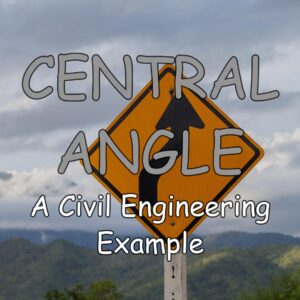
Central angle calculations are a fundamental aspect of roadway engineering, particularly in designing curved roads. Civil engineers use these calculations to determine the degree of road curvature, which significantly impacts road safety and compliance with regulations. Mathematical concepts such as radius, degrees, arc length, and proportions are commonly employed by civil engineers in their daily tasks. Our article, “How to Find a Central Angle: A Real-Life Example (from Civil Engineering),” provides further explanation and demonstrates the calculation of central angles using a real road segment as an example.
We’ve also created a video aimed at middle and high school students that demonstrates how this process works. You can watch the video preview on the left (or below, for mobile users).
4. Designing Efficient Roof Overhang Using Trigonometry

Trigonometry is a powerful tool in architecture and construction, providing a simple yet effective way to calculate the sizes of building elements, including roof overhangs. For example, the tangent function is used to design the optimal length of a roof overhang that blocks the high summer sun while allowing the lower winter sun to enter. Our article, “Tangent (Trigonometry): A Real-Life Example (From Architecture and Construction),” provides a detailed use case with two methods of calculation and also includes a worksheet.
We’ve also created a video aimed at middle and high school students that demonstrates how this calculation works. You can watch the video preview on the left (or below, for mobile users).
5. Designing Efficient Roofs for Solar Panels Using Angle Geometry:

Mathematics plays a crucial role in architecture, aiding architects and construction engineers in designing energy-efficient building structures. For example, when considering the installation of solar panels on a building’s roof, understanding geometric properties such as adjacent and alternate angles is essential for maximizing energy efficiency. By utilizing mathematical calculations, architects can determine the optimal angle for positioning solar panels and reflectors to capture maximum sunlight. Our article, “A Real-Life Example of How Angles are Used in Architecture,” provides explanations and illustrations, including animations.
We’ve also created a video designed for middle and high school students that illustrates how this optimization works. A preview of the video is available on the left (or below, for mobile users).
6. Precision Drilling of Oil Wells Using Trigonometry:

Petroleum engineers rely on trigonometric principles such as sines, cosines, tangents, and right-angle triangles to drill oil wells accurately. Trigonometry enables engineers to calculate precise angles and distances necessary for drilling vertical, inclined, and even horizontal wells. For instance, when drilling at an inclination of 30°, engineers can use trigonometry to calculate the vertical depth corresponding to each foot drilled horizontally. Our article, “CosX: A Real-Life Example (from Petroleum Engineering),” provides examples, drawings of right triangle models, and necessary calculations.
We’ve also created a video designed for middle and high school students that shows these trigonometry calculations in an animated and easy-to-follow way. A preview of the video is available on the left (or below, for mobile users).
7. Calculating Water Flow Rate Using Composite Figures:
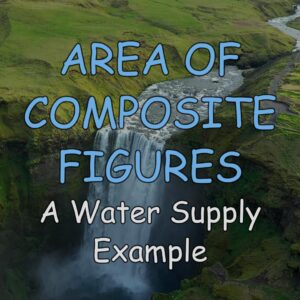
Water supply specialists frequently encounter the task of calculating water flow rates in water canals, which involves determining the area of composite figures representing canal cross-sections. Many canal cross-sections consist of composite shapes, such as rectangles and triangles. By calculating the areas of these individual components and summing them, specialists can determine the total cross-sectional area and subsequently calculate the flow rate of water. Our article, “Area of Composite Figures: A Real-Life Example (from Water Supply),” presents necessary figures, cross-sections, and an example calculation.
We’ve also created a video designed for middle and high school students that shows channels, water flow, and calculations. A preview of the video is available on the left (or below, for mobile users).
Math Problems in Business and Marketing
Mathematics plays a crucial role not only in finance and banking but also in making informed decisions across various aspects of business development, marketing analysis, growth strategies, and more. Here are some real-world math problems commonly encountered in business and marketing:
8. Analyzing Webpage Position in Google Using Polynomials and Polynomial Graphs:

Polynomials and polynomial graphs are essential tools for data analysis. They are useful for a wide variety of people, not only data analysts, but literally everyone who ever uses Excel or Google Sheets. Our article, “Graphing Polynomials: A Real-World Example (from Data Analysis),” describes this and provides an authentic case study. The case study demonstrates how polynomials, polynomial functions of varying degrees, and polynomial graphs are used in internet technologies to analyze the visibility of webpages in Google and other search engines.
We’ve also created a video designed for middle and high school students that explains this and provides additional information about polynomials of various degrees. A preview of the video is available on the left (or below, for mobile users).
9. Making Informed Business Development Decisions Using Percentages:

In business development, math problems often revolve around analyzing growth and making strategic decisions. Understanding percentages is essential, particularly when launching new products or services. For example, determining whether a startup should target desktop computer, smartphone, or tablet users for an app requires analyzing installation percentages among user groups to gain insights into consumer behavior. Math helps optimize marketing efforts, enhance customer engagement, and drive growth in competitive markets. Check out our article “A Real-Life Example of Percent Problems in Business” for a detailed description of this example.
We’ve also created a video for middle and high school students that explains this use case in detail. More insights are provided in the video. A preview of the video is available on the left (or below, for mobile users).
10. Analyzing Customer Preferences Using Polynomials:

Marketing involves not only creative advertising but also thorough analysis of customer preferences and marketing campaigns. Marketing specialists often use simple polynomials for such analysis, as they help analyze multiple aspects of customer behavior simultaneously. For instance, marketers may use polynomials to determine whether low price or service quality is more important to hotel visitors. Smart analysis using polynomials enables businesses to make informed decisions. If you’re interested in learning more, our article “Polynomials: A Real Life Example (from Marketing)” provides a real-world example from the hotel industry.
We’ve also put together a video for middle and high school students, demonstrating how polynomials are used to analyze customer preferences. The video preview is on the left (or below, for mobile devices), providing a step-by-step guide to this practical application.
11. Avoiding Statistical Mistakes Using Simpson’s Paradox:

Data gathering and trend analysis are essential in marketing, but a good understanding of mathematical statistics helps avoid intuitive mistakes. For example, consider an advertising campaign targeting Android and iOS users. Initial data may suggest that iOS users are more responsive. However, a careful statistical analysis, as described in our article “Simpson’s Paradox: A Real-Life Example (from Marketing),” may reveal that Android users, particularly tablet users, actually click on ads more frequently. This contradiction highlights the importance of accurate statistical interpretation and the careful use of mathematics in decision-making.
To help students better understand this concept, we’ve created a video explaining how Simpson’s Paradox can prevent statistical mistakes in data analysis. The video preview is on the left (or below, for mobile devices), offering a clear and practical demonstration of this important statistical principle.
Math Problems in Digital Agriculture
In the modern era, agriculture is becoming increasingly digitalized, with sensors and artificial intelligence playing vital roles in farm management. Mathematics is integral to this digital transformation, aiding in data analysis, weather prediction, soil parameter measurement, irrigation scheduling, and more. Here’s an example of a real-world math problem in digital agriculture:
12. Combatting Pests with Negative Numbers:

Negative numbers are utilized in agriculture to determine the direction of movement, similar to how they’re used on a temperature scale where a plus sign indicates an increase and a minus sign indicates a decrease. In agricultural sensors, plus and minus signs may indicate whether pests are moving towards or away from plants. For instance, a plus sign could signify movement towards plants, while a minus sign indicates movement away from plants. Understanding these directional movements helps farmers combat pests effectively. Our article, “Negative Numbers: A Real-Life Example (from Agriculture),” provides detailed explanations and examples of how negative numbers are applied in agriculture.
We’ve also created a video for middle and high school students that shows this pest tracking in more detail. A preview of the video is available on the left (or below, for mobile users).
Math Problems in DIY Projects
In do-it-yourself (DIY) projects, mathematics plays a crucial role in measurements, calculations, and problem-solving. Whether you’re designing furniture, planning home renovations, crafting handmade gifts, or landscaping your garden, math provides essential tools for precise measurements, material estimations, and budget management. Here’s an example of a real-world math problem in DIY:
13. Checking Construction Parts for Right Angles Using the Pythagorean Theorem:

The converse of the Pythagorean theorem allows you to check whether various elements – such as foundations, corners of rooms, garage walls, or sides of vegetable patches – form right angles. This can be done quickly using Pythagorean triples like 3-4-5 or 6-8-10, or by calculating with square roots. This method ensures the creation of right angles or verifies if an angle is indeed right. Our article, “Pythagorean Theorem Converse: A Real-Life Example (from DIY),” explains this concept and provides an example of how to build a perfect 90° foundation using the converse of the Pythagorean theorem.
We’ve also created a video for middle and high school students that demonstrates this use of the converse of the Pythagorean theorem to create right angles. A preview of the video is available on the left (or below, for mobile users).
Math Problems in Entertainment and Creativity
Mathematics plays a surprisingly significant role in the creative industries, including music composition, visual effects creation, and computer graphic design. Understanding and applying mathematical concepts is essential for producing engaging and attractive creative works. Here’s an example of a real-world math problem in entertainment:
14. Controlling Stage Lamps with Linear Functions:
Linear and quadratic functions are essential components of the daily work of lighting specialists in theaters and event productions. These professionals utilize specialized software and controllers that rely on algorithms based on mathematical functions. Linear functions, in particular, are commonly used to control stage lamps, ensuring precise and coordinated lighting effects during performances. Our article, “Linear Function: A Real-Life Example (from Entertainment),” delves into this topic in detail, complete with animations that illustrate how these functions are applied in practice.
We’ve also created a video for middle and high school students that demonstrates controlling these lights in real-time, with additional examples. A preview of the video is available on the left (or below, for mobile users).
Math Problems in Healthcare
Mathematics plays a crucial role in solving numerous real-world problems in healthcare, ranging from patient care to the design of advanced medical devices. Here are several examples of real-world math problems in healthcare:
15. Calculating Dosage by Converting Time Units:

Nurses frequently convert between hours, minutes, and seconds to accurately administer medications and fluids to patients. For example, if a patient requires 300mL of fluid over 2.5 hours, nurses must convert hours to minutes to calculate the appropriate drip rate for an IV bag. Understanding mathematical conversions and solving proportions are essential skills in nursing. Check out our article, “Converting Hours to Minutes: A Real-Life Example (from Nursing),” for further explanation.
We’ve also created a video for middle and high school students that illustrates these time conversions in a practical nursing scenario. A preview of the video is available on the left (or below, for mobile users).
16. Analyzing heart functioning and detecting heart attacks

Medical students specializing in cardiology — and cardiologists themselves — use vector math to understand how electrical signals move through the heart. It also helps them notice small changes in an ECG that could signal heart problems and figure out which part of the heart may be affected. Our article, “How cardiology uses high school vector math,” explains this in more detail.
We’ve also created a video for middle and high school students that shows how cardiologists use vectors and the heart’s electrical signals to detect a heart attack. A preview of the video is available on the left (or below, for mobile users).
17. Predicting Healthcare Needs Using Quadratic Functions:
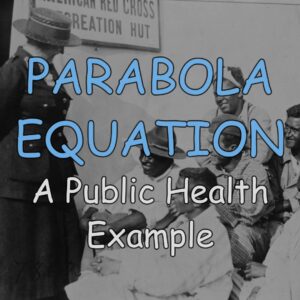
Mathematical functions, including quadratic functions, are used to make predictions in public health. These predictions are vital for estimating the need for medical services, such as psychological support following traumatic events. Quadratic functions can model trends in stress symptoms over time, enabling healthcare systems to anticipate and prepare for increased demand. Our article, “Parabola Equation: A Real-Life Example (from Public Health),” provides further insights and examples.
We’ve also created a video for middle and high school students that illustrates how quadratic functions help predict healthcare trends. A preview of the video is available on the left (or below, for mobile users).
18. Predicting Healthcare Needs Using Piecewise Linear Functions:
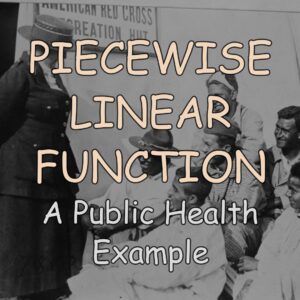
Piecewise linear functions are useful for describing real-world trends that cannot be accurately represented by other functions. For instance, if stress symptoms fluctuate irregularly over time, piecewise linear functions can define periods of increased and decreased stress levels. Our article, “Piecewise Linear Function: A Real-Life Example (From Public Health),” offers an example of how these functions are applied.
We’ve also created a video for middle and high school students that demonstrates how piecewise linear functions model these changing trends in healthcare. A preview of the video is available on the left (or below, for mobile users).
19. Designing Medical Prostheses Using the Pythagorean Theorem:

The Pythagorean theorem is applied in the design of medical devices, particularly prostheses for traumatic recovery. Components of these devices often resemble right triangles, allowing engineers to calculate movement and placement for optimal patient comfort and stability during rehabilitation. For a detailed explanation and animations, see our article, “The 3-4-5 Triangle: A Real-Life Example (from Mechatronics).”
We’ve also created a video for middle and high school students that illustrates how the Pythagorean theorem helps in prosthesis design in an animated way. A preview of the video is available on the left (or below, for mobile users).
20. Illustrating Disease Survival Rates Using Cartesian Coordinate Plane:
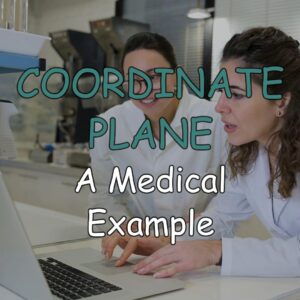
In medicine, Cartesian coordinate planes are utilized for analyzing historical data, statistics, and predictions. They help visualize relationships between independent and dependent variables, such as survival rates and diagnostic timing in diseases like lung cancer. Our article, “Coordinate Plane: A Real-Life Example (from Medicine),” offers a detailed exploration of this concept, including analyses for both non-smoking and smoking patients.
We’ve also created a video for middle and high school students that illustrates this analysis and gives more examples. A preview of the video is available on the left (or below, for mobile users).
Math Problems in Industry
Mathematics plays a vital role in solving numerous real-world problems across various industries. From designing industrial robots to analyzing production quality and planning logistics, math is indispensable for optimizing processes and improving efficiency. Here are several examples of real-world math problems in industry:
21. Calculating robot distances using absolute values

Robotics specialists use absolute value to calculate precise distances traveled by robots in warehouse settings. By applying absolute value to the differences in x and y coordinates, a robot determines its correct distance traveled, regardless of whether its path includes “positive” or “negative” movements.
Our article, “Absolute Value: A Real-Life Example (From Robotics),” provides more details and practical examples from warehouse robotics.
We’ve also created a video for middle and high school students that demonstrates this process with real-life examples from warehouse robotics. A preview of the video is available on the left (or below, for mobile users).
22. Designing bicycles parts using arithmetic sequences

Arithmetic sequences are used in mechanical engineering to design parts of bicycle drivetrain systems. It turns out that sprocket cassettes for urban bicycles follow a decreasing arithmetic sequence, with a constant difference between consecutive sprockets. Our article, “Arithmetic Sequence: A Real-Life Example (from Mechanical Engineering),” explains this use case in detail and also highlights the connection between arithmetic sequences and linear functions.
We’ve also created a video for middle and high school students that demonstrates this application of arithmetic sequences in action. A preview of the video is available on the left (or below, for mobile users).
23. Designing bicycles parts using geometric sequences
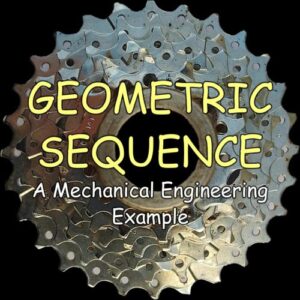
In addition to arithmetic sequences, geometric sequences are also used by mechanical engineers in their design work—especially when designing bicycle drivetrains for both flat and cross-country terrains. These bicycles require larger differences between sprockets in the rear cassette, which are calculated using a geometric sequence. Our article, “Geometric Sequence: A Real-Life Example (from Mechanical Engineering),” explains this application in detail.
We’ve also created a video for middle and high school students that demonstrates this application of geometric sequences in bicycle drivetrain design. A preview of the video is available on the left (or below, for mobile users).
24. Precise Movements of Industrial Robots Using Trigonometry:
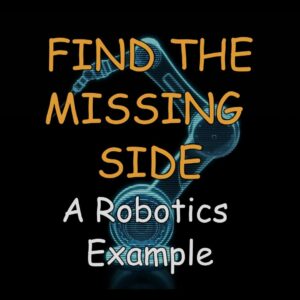
Trigonometry is extensively utilized to direct and control the movements of industrial robots. Each section of an industrial robot can be likened to a leg or hypotenuse of a right triangle, allowing trigonometry to precisely control the position of the robot head. For instance, if the robot head needs to move 5 inches to the right, trigonometry enables calculations to ensure each section of the robot moves appropriately to achieve the desired position. For detailed examples and calculations, refer to our article, “Find the Missing Side: A Real-life Example (from Robotics).”
We’ve also created a video for middle and high school students that demonstrates how trigonometry controls industrial robot movements, including calculations using both sine and cosine values. A preview of the video is available on the left (or below, for mobile users).
25. Measuring Nanoparticle Size via Cube Root Calculation:

Mathematics plays a crucial role in nanotechnology, particularly in measuring the size of nanoparticles. Cube roots are commonly employed to calculate the size of cube-shaped nanoparticles. As nanoparticles are extremely small and challenging to measure directly, methods in nanotechnology determine nanoparticle volume, allowing for the calculation of cube root to determine the size of the nanoparticle cube side. Check out our article, “Cube Root: A Real-Life Example (from Nanotechnology),” for explanations, calculations, and insights into the connection between physics and math.
We’ve also created a video for middle and high school students that shows this application of cube roots in more detail, with real images of nanoparticles! A preview of the video is available on the left (or below, for mobile users).
26. Understanding Human Emotions Using Number Codes for Robots:

Mathematics is employed to measure human emotions effectively, which is essential for building smart robots capable of recognizing and responding to human emotions. Each human emotion can be broken down into smaller features, such as facial expressions, which are assigned mathematical codes to create algorithms for robots to recognize and distinguish emotions. Explore our article, “Psychology and Math: A Real-Life Example (from Smart Robots),” to understand this process and its connection to psychology.
We’ve also created a video for middle and high school students that shows real faces with various emotions and demonstrates how special number codes are used to teach robots to recognize them. A preview of the video is available on the left (or below, for mobile users).
27. Systems of Linear Equations in Self-Driving Cars:
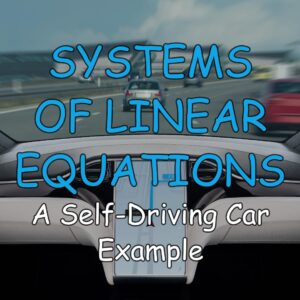
In the automotive industry, mathematics is pivotal for ensuring the safety and efficiency of self-driving cars. Systems of linear equations are used to predict critical moments in road safety, such as when two cars are side by side during an overtaking maneuver. By solving systems of linear equations, self-driving car computers can assess the safety of overtaking situations. Our article, “Systems of Linear Equations: A Real-Life Example (from Self-Driving Cars),” provides a comprehensive explanation, including animated illustrations and interactive simulations, demonstrating how linear functions and equations are synchronized with car motion.
We’ve also created a video for middle and high school students that features easy-to-follow animations of moving cars, making it easier to understand this topic. A preview of the video is available on the left (or below, for mobile users).
Math Problems in Information Technology (IT)
Mathematics serves as a fundamental tool in the field of information technology (IT), underpinning various aspects of software development, cybersecurity, and technological advancements. Here are some real-world math problems encountered in IT:
28. Selecting the Right Word in Machine Translation Using Mathematical Probability:

Theoretical probability plays a crucial role in AI machine translation systems, such as Google Translate, by aiding in the selection of the most appropriate words. Words often have multiple translations, and theoretical probability helps analyze the frequency of word appearances in texts to propose the most probable translation. Dive deeper into this topic in our article, “Theoretical Probability: A Real-Life Example (from Artificial Intelligence).”
We’ve also created a video for middle and high school students that explores more examples of calculating theoretical probability, including real-world texts like those by Jack London. A preview of the video is available on the left (or below, for mobile users).
29. Creating User-Friendly Music Streaming Websites Using Mathematical Probability:
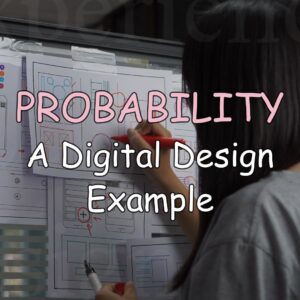
Probability is utilized in user experience (UX) design to enhance the usability of digital products, including music streaming websites. Recommendation algorithms calculate theoretical probability to suggest songs that users are likely to enjoy, improving their overall experience. Learn more about this application in our article, “Theoretical Probability: A Real-Life Example (from Digital Design).”
We’ve also created an animated video that dives deeper into how theoretical probability enhances song recommendations on music streaming platforms, using David Bowie tracks as examples. A preview of the video is available on the left (or below, for mobile users).
30. Developing Realistic Computer Games with Vectors:
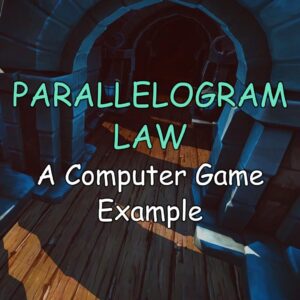
Mathematics is essential in animating objects and simulating real-world factors in computer games. Vectors enable game developers to incorporate realistic elements like gravity and wind into the gaming environment. By applying vector addition, developers can accurately depict how external forces affect object trajectories, enhancing the gaming experience. Explore this concept further in our article, “Parallelogram Law of Vector Addition: A Real-Life Example (from Game Development).”
We’ve also created a video for middle and high school students that provides more detailed animations showing the ball’s trajectory, illustrating how different forces (like air resistance) impact its movement. A preview of the video is available on the left (or below, for mobile users).
31. Detecting Malicious Bots in Social Media Using Linear Inequalities:

Mathematical inequalities are valuable tools in cybersecurity for identifying malicious activity on social media platforms. By analyzing behavioral differences between real users and bots—such as friend count, posting frequency, and device usage—cybersecurity experts can develop algorithms to detect and block suspicious accounts. Discover more about this application in our article, “How to Write Inequalities: A Real-life Example (from Social Media).”
We’ve also created a video for middle and high school students that explores how different types of inequalities help distinguish between real users and bots, all presented in an animated and easy-to-follow way. A preview of the video is available on the left (or below, for mobile users).
32. Increasing Computational Efficiency Using Algebraic and Rational Expressions

Algebraic and rational expressions are crucial in computer technology for increasing computational efficiency. Every step in a computer program’s algorithm requires valuable time and energy for execution. This is especially important for programs used in various safety and security systems. Simplifying these expressions helps boost computational performance. Our article, “Algebraic and Rational Expressions: A Real-Life Example (from Computer Technology),” explains this in detail.
We’ve also created a video for middle and high school students that presents these real-world examples of simplification in a clear, animated format. It helps students see how what they learn in school applies to real jobs. A preview of the video is available on the left (or below, for mobile users).
Math Problems in Legal Issues
In legal proceedings, mathematics plays a crucial role in analyzing data and making informed decisions. Here’s a real-world math problem encountered in legal work:
33. Proving the Reliability of Technology in Court Using Percentages:
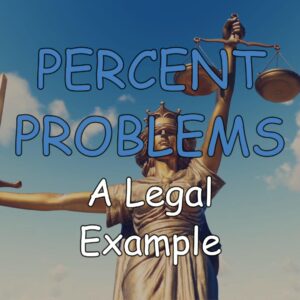
In certain court cases, particularly those involving new technologies like autonomous cars, lawyers may need to employ mathematical methods to justify evidence. Percentage analysis can be utilized to assess the reliability of technology in court. For instance, in cases related to self-driving cars, lawyers may compare the percentage of errors made by autonomous vehicles with those made by human drivers to determine the technology’s safety. Delve deeper into this topic in our article, “Solving Percent Problems: A Real-Life Example (from Legal).”
We’ve also created a video for middle and high school students that presents this legal use case in an engaging, animated format. It includes additional examples and explores how math plays a role in real-world legal decisions. A preview of the video is available on the left (or below, for mobile users).
Math Problems in Safety and Security
In the realm of safety and security, mathematics plays a vital role in protecting people, nature, and assets. Real-world math problems in this field can involve reconstructing crime scenes, analyzing evidence, creating effective emergency response plans, and predicting and responding to natural disasters. Here are two examples:
34. Reconstructing a Crime Scene with Inverse Trigonometry:

Forensic specialists rely on mathematical methods, such as inverse trigonometry, to uncover details of crimes long after they’ve occurred. Inverse trigonometric functions like arcsin, arccos, and arctan enable forensic specialists to calculate precise shooting angles or the trajectory of blood drops at crime scenes. Dive into this topic in our article, “Arctan: A Real-Life Example (from Criminology).”
We’ve also created a video for middle and high school students that explains this forensic case in under five minutes. Check out the video preview on the left (or below, for mobile users).
35. Responding to Wildfires with Mathematical Variables:

Variables in mathematical language are also prevalent in real-world scenarios like firefighting. For instance, when dealing with wildfires, independent variables like forest type, wind speed and direction, rainfall, and terrain slope influence fire spread speed (dependent variable). By utilizing specialized formulas incorporating these variables, fire protection specialists can accurately predict fire paths and optimize firefighting efforts. Explore this practical application in our article, “Dependent and Independent Variables: A Real-Life Example (from Fire Protection).”
We’ve also created a video for middle and high school students that explores additional real-world factors influencing wildfire spread. The video includes extra calculations, animated explanations, and insights into the math skills essential for fire protection specialists. Check out the preview on the left (or below, for mobile users).
Math Problems in Sports
36. Analyzing athletes' movements in geometric planes

Geometric planes are used daily in sports for analyzing athletes’ movements to boost performance and reduce injury risk. Athletic trainers and biomechanics experts examine these movements in three perpendicular geometric planes. For a more detailed explanation, check out our article, “Geometric Plane: A Real-Life Application in Sports.”
We’ve also created a video for middle and high school students that visually explains it. The video features engaging animations, a smooth flow, and easy-to-understand explanations. Check out the preview on the left (or below, for mobile users).
Math Problems in Sustainability
37. Evaluating product packaging efficiency with ratios
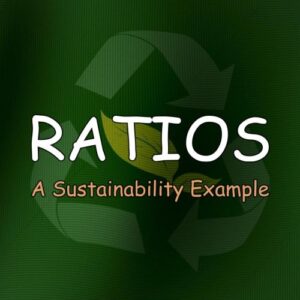
Ratios play an important role in evaluating the efficiency of packaging for eco-friendly products. Sustainability experts, for instance, often rely on the product-to-package ratio to assess the amount of wasted space in packaging. You can explore a detailed text version of this math application in our article: “Ratios: A Real-Life Example from Sustainability“.
We’ve also created a video for middle and high school students that explores product-to-package ratios in more detail, comparing different products like toothpaste. The video presents these concepts in an engaging and easy-to-follow way. Check out the preview on the left (or below, for mobile users).
38. Evaluating packaging efficiency with cylinder volume

When assessing packaging efficiency (see above), knowing how to calculate the volume of a cylinder is also essential. It helps determine how efficiently cylinder-shaped products, like AA or coin cell batteries, are packaged. Our article, “Volume of a Cylinder: A Real-Life Example (Sustainability)“, explains this in detail.
We’ve also created a video for middle and high school students that explains this example and explores different battery packaging styles. It includes full calculations and discusses when a larger package might be the better choice. Check out the preview on the left (or below, for mobile users).
39. Evaluating packaging efficiency with cylinder volume
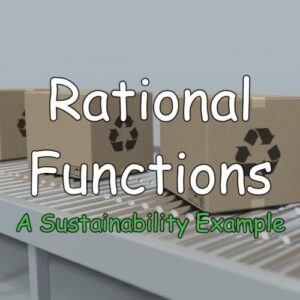
Rational functions are used to evaluate and optimize package dimensions, ensuring minimal material usage. Our article, Rational Functions: A Real-Life Example (from sustainability), explains this case study in detail.
We’ve also created an easy-to-follow video for middle and high school students. Check out the preview on the left (or below, for mobile users).
Math Problems in Weather and Climate
In the realm of weather and climate, mathematics is crucial for creating mathematical models of Earth’s atmosphere, making weather forecasts, predicting weather patterns, and assessing long-term climate trends. Here’s an example:
40. Forecasting Thunderstorms with Negative Numbers:

Negative numbers play a significant role in forecasting thunderstorms. The probability of thunderstorms is closely tied to the temperature differences between air masses in the atmosphere. By subtracting negative numbers (representing temperature values) and analyzing the results, meteorologists can forecast the likelihood of thunderstorms based on the temperature differentials. Dive deeper into this concept in our article, “Subtracting Negative Numbers: A Real-Life Example (from Weather Forecast).“
We’ve also created a video for middle and high school students that provides more in-depth examples and explains how knowledge from fields like physics, chemistry, geography, and biology helps meteorologists forecast thunderstorms. Check out the preview on the left (or below, for mobile users).
Conclusions
Many students perceive math as disconnected from the real world, leading them to question its relevance. Admittedly, maintaining this relevance is no easy feat — it requires collective effort. Farmer Alfred can’t tackle this challenge alone. However, introducing more real-world math examples into the school curriculum is a crucial step. Numerous studies have demonstrated that such examples significantly enhance students’ motivation to learn math. Our own pilot tests confirm this, showing that a clear connection between real-world problems and math education profoundly influences how young people view their future careers.
Therefore, to increase the overall relevance of math education and motivate students, we must prioritize the integration of real-world examples into our teaching practices. At DARTEF, we are dedicated to this cause, striving to bring authenticity to mathematics education worldwide.
References
- Vos, Pauline. ““How real people really need mathematics in the real world”—Authenticity in mathematics education.” Education Sciences 8.4 (2018): 195.
- Cambridge dictionary, Meaning of problem in English.
- Reif, Frederick. Applying cognitive science to education: Thinking and learning in scientific and other complex domains. MIT press, 2008.

